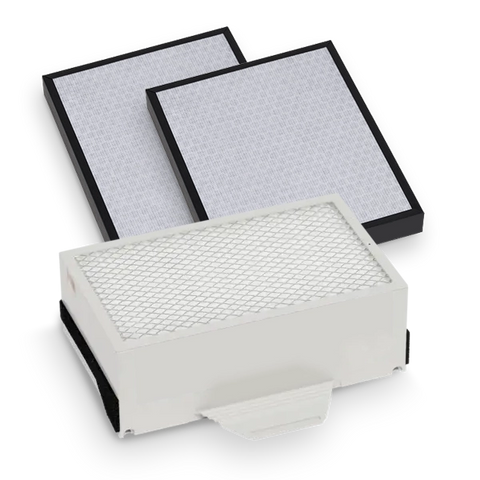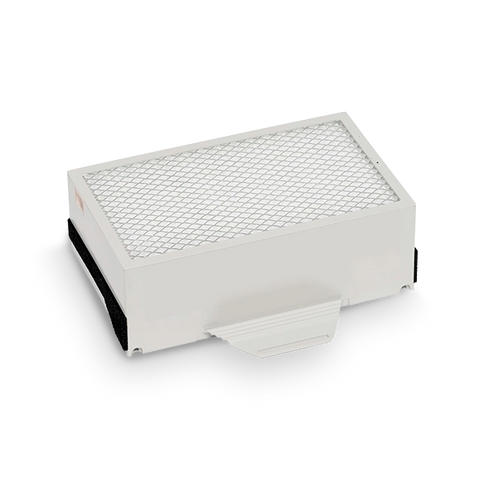Restaurant owners and managers already know it’s important to keep things clean for the safety and well-being of their customers. Floors, countertops, grills, tables, bathrooms–the list is endless. But what about clean air? Sure there is a ventilation system to remove smoke, steam, and odors from the kitchen. But there are other areas of a restaurant that can benefit from better indoor air quality. Let’s take a look at how to improve restaurant IAQ.
Benefits Of Clean Restaurant Air
From a culinary perspective, sight, taste, and smell affect how a customer experiences food. A dish that is cooked and plated perfectly can be derailed by a wayward smell. Clean air preserves the aromas of the food, whereas polluted air can actually dull the taste. Having clean air also helps prevent the spread of airborne illnesses among staff and patrons. Constantly filtering the air catches any aerosolized droplets that contain disease causing microorganisms before they can cause harm.
Clean air also benefits the staff. Studies show that air quality is linked to cognitive function. Employees are exposed to a variety of fumes—from the kitchen, cleaning agents, and even decorations offgasing and emitting chemicals. Using an air purifier with a volatile organic compound (VOC) filter helps remove noxious chemicals from the air. A cleaner work environment means higher employee satisfaction and better health. Air cleanliness may be invisible, but it can make an impact on how a restaurant operates.
Don’t forget about moisture in the air. Excessive humidity can affect taste, freshness, how smells are released from things like herbs, and it can even change flavor intensity. A dehumidifier can help maintain ideal relative humidity for comfort, while also keeping condensation from accumulating. When paired with an air purifier, it creates a welcoming atmosphere that will have customers returning again and again.
Airborne Pollutants in Restaurants
Restaurant kitchens are a hotbed of activity. Prepping, cooking, plating, and washing all happening at once. Unfortunately, all that activity can generate indoor air pollution.
What’s In the Air?
Delicious aromas aren't the only thing wafting through restaurant air. Not only does what is cooking make a difference, so does how it is cooked and even what is used to cook it. So what is in the air?
Particulate Matter - Cooking methods like frying, grilling, or charbroiling have been shown to release high amounts of PM2.5 into the air. Restaurants typically cook with large amounts of organic materials and oils that become a fine aerosol in the air. Things like cooking spray and other aerosols also contribute to the problem.
Volatile Organic Compounds - The wonderful smells from the kitchen are actually from scent carrying volatile organic compounds. When scientists studied one cooking complex, they found that the more cooking activity, the faster the total volatile organic compound (TVOC) numbers reached unacceptable levels. These VOCs also carried over into areas outside of the kitchen.
Harmful Gases - Most restaurant kitchens use natural gas for their heat source. Instant heat, fine temperature control, and low cost make natural gas the restaurant heat source of choice. Unfortunately, gas stoves also give off carbon monoxide (CO), nitrogen dioxide (NO2), and other nitrogen oxides (NOx). Even charcoal grills give off carbon dioxide (CO2). Kitchen ventilation systems are supposed to exhaust gasses outside, but they can still travel throughout the building.
Restaurant Air Pollution & Health
Respiratory issues are the main health effect from airborne pollutants in a restaurant. Long term exposure to PM2.5 can lead to inflammation, worsen asthma symptoms, and affect overall lung function. In certain situations, high kitchen particulate levels have been tied to lung cancer. If carbon monoxide is not vented sufficiently, it can cause headaches and nausea. High levels of carbon dioxide from combustion can impair thinking and productivity. Excessive VOCs can cause respiratory issues like coughing and even increase cancer risk.
Air Pollution Culprits in The Kitchen
It is not surprising that the main source of air pollution in restaurants comes from the kitchen. Commercial stoves, piping hot ovens, and deep fat fryers usually run on natural gas. Even with a vent hood, burning natural gas releases a large volume of pollutants. Add to it the particles from cooking food, and the higher pollution levels in kitchens makes sense.
Kitchen Air Pollution Sources
There are multiple sources of airborne pollution in a restaurant, mainly from the kitchen, but not exclusively.
Cooking Emissions
No doubt the biggest source of restaurant air pollution is the kitchen itself. Ventilation hoods remove a lot of the cooking emissions, but harmful pollutants can still make their way around the building. Cooking equipment can give off pollutants not just from burning fuel to create heat, but from the actual cooking process.
Burning Fuel - Cooking food requires heat. Burning natural gas is the most common fuel source which unfortunately gives off nitrogen dioxide, carbon monoxide, and carbon dioxide. If a gas burner is not working properly, the combustion process may not fully complete, leading to fine soot being released.
Cooking Byproducts - A study using IAQ monitoring equipment found that cooking can increase particulate matter emissions as oils vaporize, organic materials carbonize, and liquids boil off. Frying, charbroiling, and grilling give off fine particles. The airborne particles collect on surfaces (especially when combined with oil/grease) where they can then collect even more contaminates. Due to the high humidity often found in kitchens, airborne pollutants can mix with moisture in the air and then condense on cooler surfaces, creating another hazard.
Chemicals
Keeping a restaurant clean requires a variety of cleaning agents. Cleanliness is very important for health reasons, but some of the chemicals can give off harmful fumes.
-
Scented Cleaners - Cleaning products with a fresh citrus or pine smell can give off a range of volatile organic compounds. Cleaning products that contain terpenes can react with other air pollutants and create gaseous air toxic pollutants like formaldehyde. Citrus cleaner has also been found to react with chlorine bleach to create fine particulates.
-
Disinfectants - Bleach is commonly used to disinfect and sanitize. It can also irritate respiratory systems. Ammonia can also make asthma symptoms worse and irritate the eyes. Chlorine bleach and ammonia cannot be mixed because it creates chloramine gas, which is extremely dangerous.
-
Glass Cleaner - Keeping everything looking nice and free from fingerprints or grease buildup takes constant work. Glass cleaners and other multipurpose cleaners often have glycol ethers which the EPA identifies as toxic.
-
Spray Cans - Not the metal cans themselves, but the things inside them. Even if the liquid inside a spray can is fairly harmless, the propellant may not be. Gases like butane and propane are often used in spray cans, which add to the VOCs in the air.
Health Risks from Poor Restaurant Air Quality
Exposure to indoor air pollution, especially over long periods, can have negative health effects. Most restaurants are focused on food safety, but air quality safety should not be downplayed. Chefs and line cooks are exposed to airborne pollutants due to working directly at their sources. Without adequate ventilation, these are just a few health problems that can occur:
Respiratory issues - Pollutants found in kitchen air can trigger asthma symptoms as well as coughing and irritated lungs. Respiratory illnesses, such as chronic obstructive pulmonary disease (COPD), have been attributed to high amounts of harmful particulates in the air. Increased rates of lung cancer have been linked to cooking emissions from frying food.
Cognitive Issues - Exposure to air pollution can make it harder to concentrate and stay focused. Headaches and nausea are also a common symptom of pollution exposure (including fumes from cleaning products). Studies have shown that indoor air pollution can also affect productivity.
Cardiovascular issues - Poor air quality has already been linked to heart disease and increased risks of heart attack or stroke. Exposure to airborne particulate matter (like those from grilling) can also lead to increased blood pressure.
Patrons Can Suffer as Well
Customers can be affected by restaurant air pollution too. Outdated HVACs may not be able to keep up with the sheer volume of pollution created during a meal rush. Bad smells, high humidity levels, and airborne pollutants can take away from the atmosphere and make it hard to enjoy a good meal. If a customer is uncomfortable due to poor air quality, they are not likely to return. Having a separate HVAC system for the dining area allows for greater control over not only the air quality, but the comfort level. It also helps isolate customers from kitchen-based pollutants. Having a few portable air purifiers in the dining room can improve indoor air quality.
Better Ventilation Leads to Better Air Quality
Restaurants are required to have ventilation systems that can remove harmful pollutants from the air. Important design regulations like NFPA-96 and UL 710 specify requirements like ventilation rate and fire control equipment among other things.
Clearing The Air
A high-efficiency range hood is the first line of defense against noxious fumes, toxic particles, and organic aerosols. The exhaust hood removes airborne smoke and grease, so it doesn’t make its way to the dining room. Pulling oil and grease particles out of the kitchen keeps them from coating other surfaces and causing a safety issue. Aerosolized grease can also damage walls and ceilings, so it is extremely important to get it out and away from the kitchen.
Moisture Control
Proper humidity regulation has several benefits in a restaurant. First, it helps keep staff and diners more comfortable. Controlling humidity also helps prevent mold. It needs a warm, dark place with plenty of moisture to grow. Keeping moisture levels under control also helps food maintain the smells, flavors, and textures the chefs worked so hard to create. Use proper ventilation or a dehumidifier before you end up with soggy crusts or flat cakes.
Bringing In Fresh Outside Air
In some situations, it may be necessary to bring in outside air in to meet indoor air quality demands. In these cases, a device connected to the HVAC system (sometimes known as a fresh air machine) draws outside air into the building. The fresh air machine filters the outside air before passing it indoors. While a fresh air machine can help with ventilation, it does not clean indoor air. Care must be taken to assess the outdoor air quality along with the filtration capability of the fresh air machine so that any outside air introduced is not actually worse than the indoor air it is replacing.
Don’t Fall Behind on Maintenance
Even an ultra-high-performance HVAC system needs routine maintenance. Make sure to change air filters often to keep the air clean and prevent airflow obstruction. Clogged air filters can lead to poor air circulation, which can lead to pockets of stale air or higher humidity. The ventilation system in the kitchen will have different maintenance needs than the HVAC systems for the rest of the restaurant. Make sure the range vent hood grease filters are cleaned regularly so they flow freely and don’t overwork the fan motors.
Keeping Track of Air Quality
Air quality monitors are a great way to keep track of indoor air quality (IAQ). Some can be linked to software that can track IAQ over time, helping restaurant owners be prepared.
Air quality monitors can detect things like:
- Temperature
- Humidity level
- Particle matters (both PM2.5 and PM10)
- Nitrogen oxides
- Carbon dioxide emissions
- Carbon monoxide emissions
- Toxic gases
- Volatile organic compounds
- Ozone
Depending on the air quality sensor, data can be displayed directly on the unit or sent to an app or other software for analysis. There are hard-wired and wireless air quality monitors on the market. Wireless are extremely convenient to install, but they require regular battery replacement.
Benefits of Air Quality Data Monitoring
Having real time access to current and past air quality data can help identify problem areas or times when extra ventilation is needed. Leveraging historic data makes it possible to ramp up air conditioning, air purification, dehumidification, or any other air quality solution to help clear the air before IAQ becomes an issue.
There are several air quality monitoring solutions available. These software packages and apps can help sort through the data noise to create actionable solutions. Some solutions can be integrated into automated controls systems, while others can simply send alerts when air quality is outside preferred levels.









